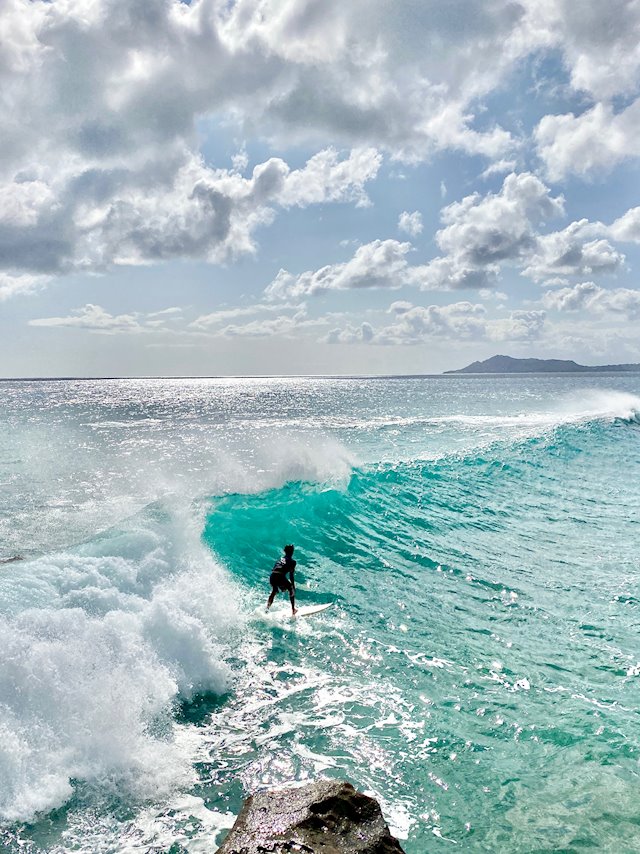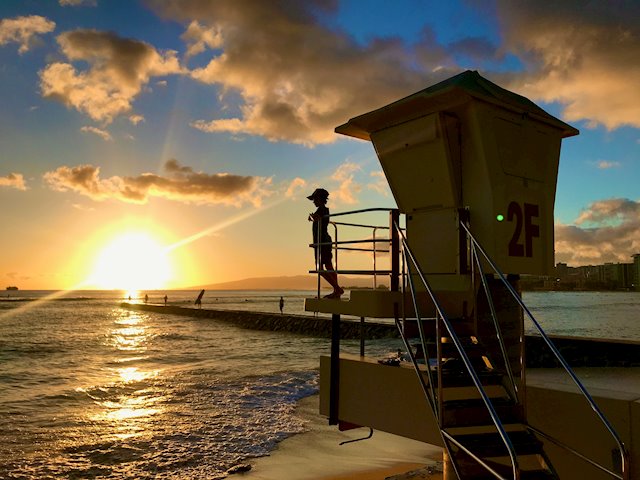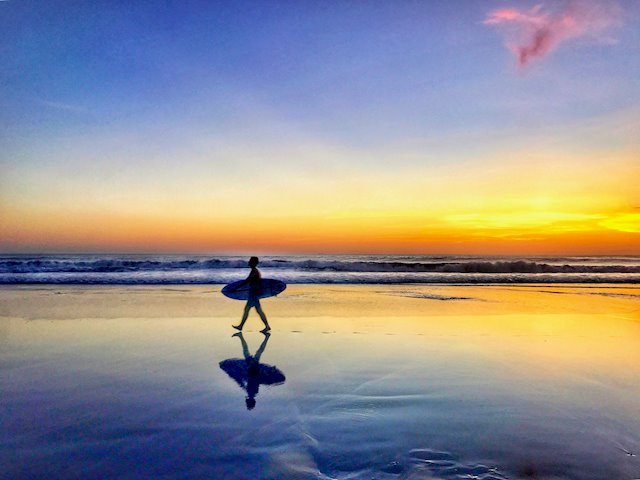Ocean Power
Hawaiian waves, even during small conditions, can be some of the most powerful waves on the planet. Unlike the mainland, there is no continental shelf to slow down approaching swells, so waves move extremely fast from deep water to the shallow shore. During large surf conditions, if you’re on the sand or atop rocks or cliffs near the water’s edge, you’re still vulnerable to the power of the ocean, as receding waters can pull you into open water. And if you’re not used to swimming in the impact zone, shore break waves, tide and currents can quickly sap you of energy. That said, Hawaii’s wave-rich waters are unlike any experience you’ve ever had. With a little foresight, some planning, and little bit of courage, you too can experience one of Hawaii’s greatest gifts to the world: the art of surfing!
Do Your Homework
If you’re at a new surf spot, especially in Hawaii, take some time to understand a little bit about the spot before you wax your surfboard up and jump in. Look to see where other surfers enter and exit the water. Take notice of where surfers in the water are sitting, where they paddle when a set approaches, and what they do if they’ve fallen on a wave. Check to see if the tide is coming up or going out. If you don’t know, ask. If there are lifeguards on duty, ask them about the break. It’s their job to understand surf conditions, and they’ll probably have a lot more information than you can glean by simply watching the surf. Then wax up, paddle out, and have a blast!

South Shore
However challenging ocean conditions can get, there are still many surf spots on Oahu that lend themselves to the average or intermediate surfer. Of course, you’ll want to sample some of Waikiki’s historic surf scenes and surf breaks, but there are other spots that skirt the main breaks at Waikiki proper, and offer up more challenging waves and conditions. Make the long paddle out to Populars or “Pops” and, on the right swell, catch some of the longest rights on the island. Or, enjoy a fun-filled session with some of the South Shore’s best at Ala Moana Beach Park.
If you’ve got access to transportation, head southeast and check out offshore breaks like Secrets and Turtles, catch a few waves within feet from jagged rocks at China Walls, or try your luck in the ever-dangerous Sandy Beach shore break. On the right swell, Oahu’s east side is littered with secret spots.

North Shore
During the winter, Oahu’s North Shore is the center of the surfing universe. But you don’t have to be willing to charge 20ft waves to have a good time, as there are plenty of places to surf on the North Shore and still keep your skin intact. Try out Monster Mush between Rocky Point and Sunset Beach, as well as Chun’s or Leftovers for a smaller sampling of the mythical North Shore experience. If you’ve got the skills (and, perhaps more importantly, the courage) the North Shore offers anything and everything a surfer can ever dream of.
Westside
Oahu’s Westside is home to some of the island’s most crystalline, azure water and breathtaking surf. Local surfers here are quite protective of their precious natural resources. Keep a cool head, show respect where respect is given, and you too can partake in the Hawaiian experience of surfing.


 Facebook
Facebook
 X
X
 Pinterest
Pinterest
 Copy Link
Copy Link



